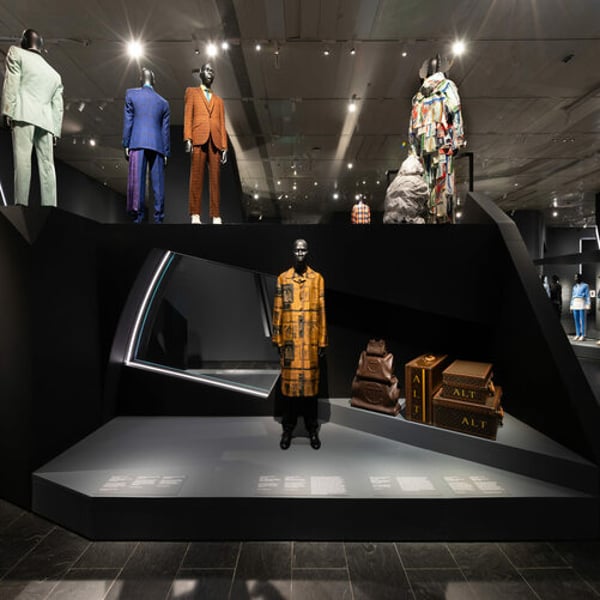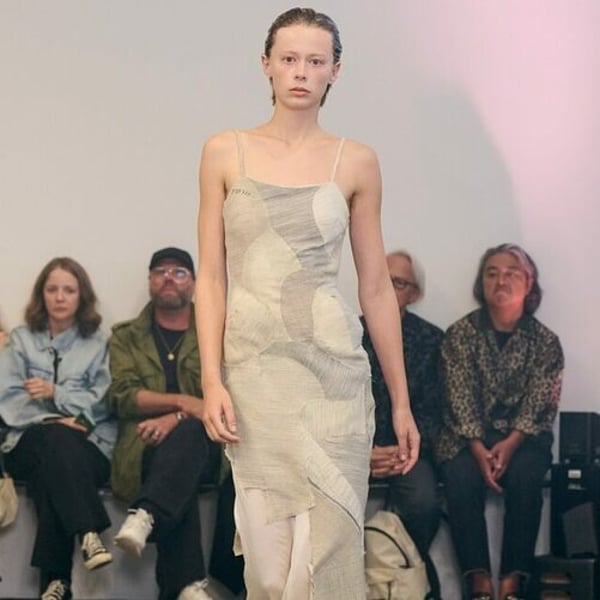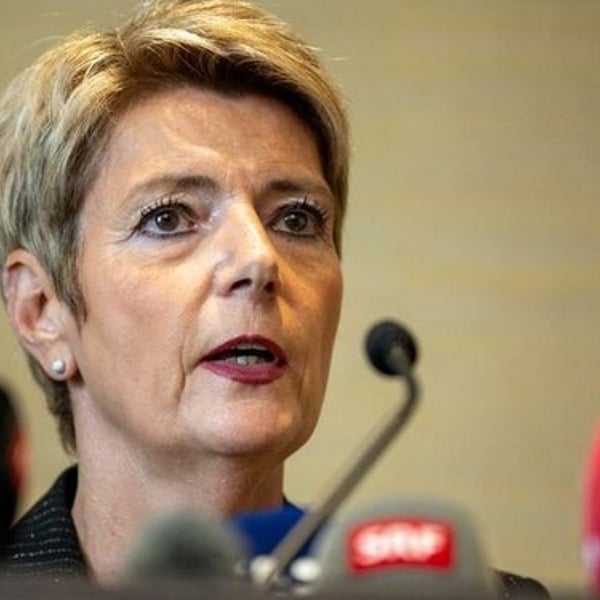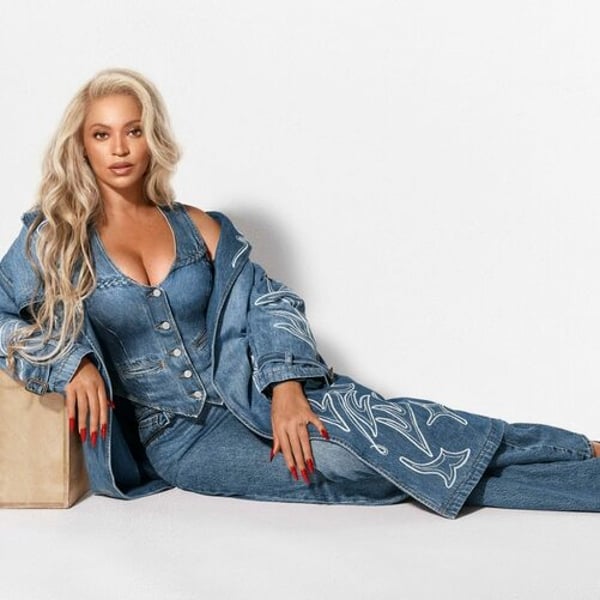When the team behind this Met Gala and exhibit theme began planning “Superfine: Tailoring Black Style”, it was just after the legendary fashion editor and figure André Leon Talley had passed away at 73, DEI was alive and well in the United States and funding to museums was not under fire.
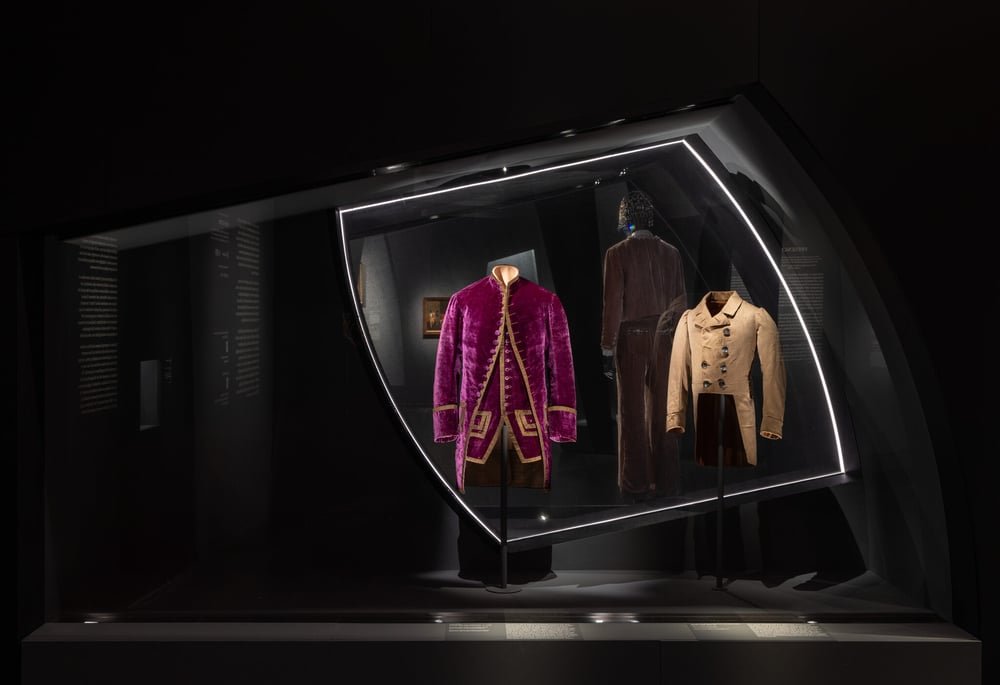
Talley’s sartorial style would also be a source of inspiration for the exhibit based on Monica L. Miller’s 2009 book “Slaves to Fashion”, which explores the cultural history of the Black dandy, beginning in the 18th century through its modern-day incarnations.
When head curator for the Anna Wintour Costume Center and the Metropolitan Museum of Art, Andrew Bolton, invited Miller to guest curate the exhibit alongside him and his team, no one could have imagined how the current administration has tried to squash DEI and erase aspects of Black history, like Harriet Tubman, from a government website. Thus, besides its fascinating, historical and overflowing with excellent style contents, this exhibit proves fashion is a better place thanks to diversity, equity and inclusion and nothing erases enduring style. FashionNetwork.com was in attendance as Bolton, Miller, Met CEO Max Hollein, and actor and co-host Colman Domingo introduced the exhibit to press and special guests.
Hollein kicked off opening remarks, noting that the fundraising event has raised a record-breaking $3 million. He introduced Domingo, who has become fashion’s best-dressed male, along with Louis Vuitton menswear creative director Pharrell Williams; rapper A$AP Rocky; Formula 1 driver Sir Lewis Hamilton; and Anna Wintour, who are serving as the event’s hosts. The timing of this particular theme was not lost on Hollein.
“The Met’s mission is to connect more people to creativity, knowledge, ideas, and, most importantly, to one another through art and scholarly pursuits. Today’s exhibition is an important example of the undoubtedly powerful significance of this exhibition in today’s world. We hope that deep understanding of the powerful histories told throughout the galleries and to recognize the extraordinary, powerful voices, the designers and artists who make this so meaningful,” Hollein said.
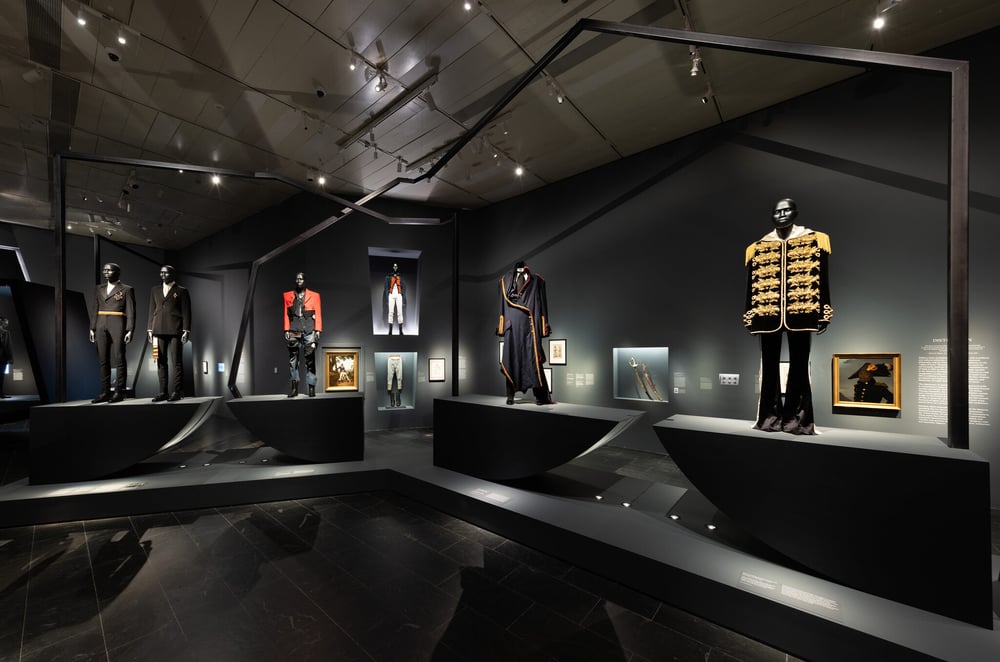
Domingo, dressed in a purple-slash-fuchsia suit by pioneering Savile Row tailor and designer Ozwald Boateng, regaled the crowd with stories of the three men who inspired his own flare for dandyism: his stepfather Clarence Cole; his biological father Colman Domingo (Sr.); and his brother Derek Domingo. He remarked how Cole, a floor refinisher, transformed from his patched workwear on Friday and came “alive, becoming another man redefining himself wearing a sharkskin suit, good Florsheim shoes, a long overcoat, and sapphire pinky ring.”
His brother introduced him to GQ magazine and would manifest the styles by working with the boys’ mother and aunt to sew the styles at home using Butterick patterns.
“My father was very grand and flashy, drove a Cadillac, and when he came to visit me, my favorite outfit he was wearing all white, tight Italian trousers that hugged his crotch and legs, and with a Canary yellow hat,” Domingo recalled.
“I stand here representing many generations of Black men who liberated themselves through style. I stand here on the shoulders of André Leon Talley, Ozwald Boateng, Sidney Poitier, Prince, Harry Belafonte, James Baldwin, and many others. There’s a quote from the great George C. Wolfe to highlight the creative spirit of Black people shaping trends and fashion. Wolfe said, ‘God created Black people, and Black people created style,'” he continued.
Next, Bolton took the stage to explain the genesis of the first Met Gala’s theme and exhibit dedicated to menswear in 20 years.
“‘Slave to Fashion’ is a cultural history of blackness from the 18th to the late 20th century. It depicts enslaved people and then self-functioning individuals using clothes to assert their agency and humanity, which is both an anesthetic and a political phenomenon. That identity is a visualization extension of Monica’s groundbreaking book and explores the origins of multiple meanings of black in the African diaspora. It’s the first in-depth exhibition that locates the history in a multimedia context in fashion, film, photography, the arts,” Bolton said, adding, “What transpires is a story of liberation emancipation through soft experimentation. It’s a story in which fashion, masculinity, and blackness converge in expressions of self and self-creation, self-invention, self-possession, self-determination, self-annunciation, and self-actualization, giving the black imagination a way of manifesting in real life. The exhibition explores how these dreams are realized and made tangible.”
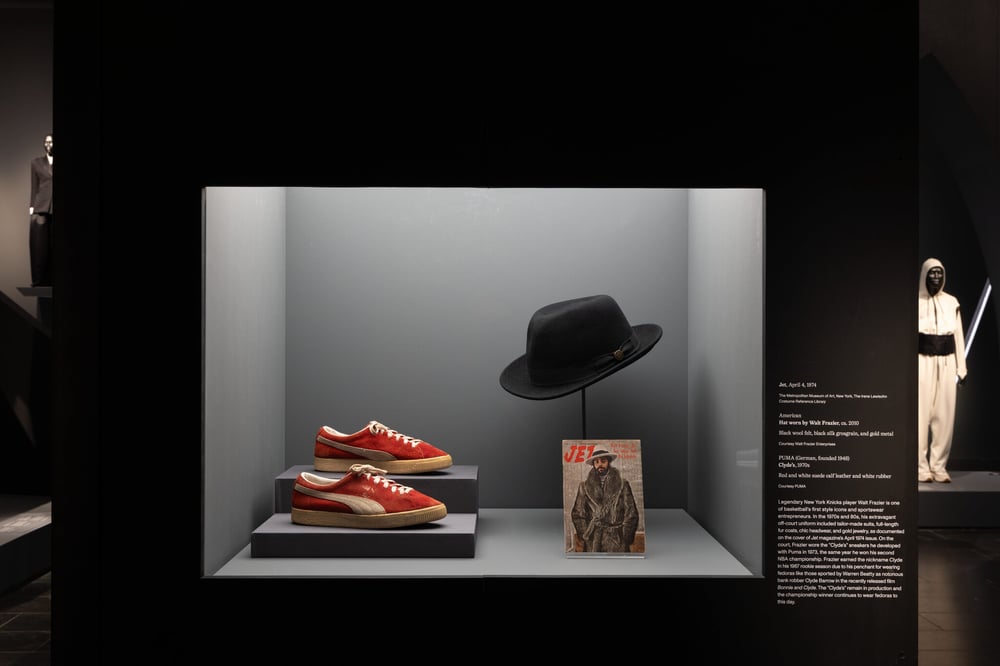
Miller, professor of Africana Studies, chair of the Africana Studies Department at Barnard College, summed it up so that guests viewing the exhibit would further understand its message and point of view. The professor noted that working with the Met was “a dream I never knew I had.”
“What Superfine explores is blackness across time and space in the U.S. and Europe as a mode of self, self-possession, and design, and it’s related to strategy and intentionality as in by design and as manifested in environment through fashion design. Dandyism is an act of refusal. Dandies are historically men and increasingly people who practice precision and intentionality in their dress. Whether that dress is sober or spectacular, a well-tailored suit with accessories is a touchstone of the dandy closet and is the focus around which Superfine is designed,” Miller explained.
“Dandy’s designated ways of being in the world were at the beginning of the 18th century, due to the slave trade, colonialism, and imperialism, they combined African and Western traditions. It addresses enslaved Africans identified as servants who were transformed into objects of consumption. They similarly engage the power of fashion and accessories to challenge representation and reimagine themselves. Their dandy-ness is a pointed understanding of the relationship between clothing and power. The Black dandy pushes the boundaries of gender, class, sexuality and raising blackness, exercising their global powers and self-definition,” she added.
The exhibit was divided into themes: ownership, presence, distinction, disguise, freedom, champion, respectability, jook, heritage, beauty, cool, and cosmopolitanism.
All sorts of suits from three-pieces, military suits, tails, and topcoat suits, tracksuits, and even suits worn by women such as Grace Jones and Josephine Baker, plus a bevy of accouterment such as ruffled shirts, bold cravats, leather breeches, and more were highlights of the exhibit.
Historical figures featured were French writer Alexandre Dumas and his father Thomas-Alexandre Dumas, who, being biracial, enjoyed a certain societal latitude; abolitionist and African American civil rights leader Frederick Douglass; W.E.B Du Bois, the Harvard-educated sociologist and historian who helped found the NAACP; musicians Prince and Sylvester; and André Leon Talley, among others, whose dandy style helped promote their endeavors.
Designers featured in the all-black galleries with specially created black mannequins were Grace Wales Bonner; Maximillian Davis for Ferragamo; Willy Chavarria; Jerry Lorenzo of Fear of God; Olivier Rousteing for Balmain; John Galliano for Dior; Tremaine Emory for Denim Tears; Ev Bravado and Téla D’Amore for Who Decides War; Ib Kamara for Off-White; Bianca Saunders; Soull and Dynasty Ogun of L’Enchanteur; LaQuan Smith; Kerby Jean-Raymond for Pyer Moss; Edvin Thompson for Theophilio; Jeffrey Banks; Raul Lopez of Luar, and Boateng, among others.
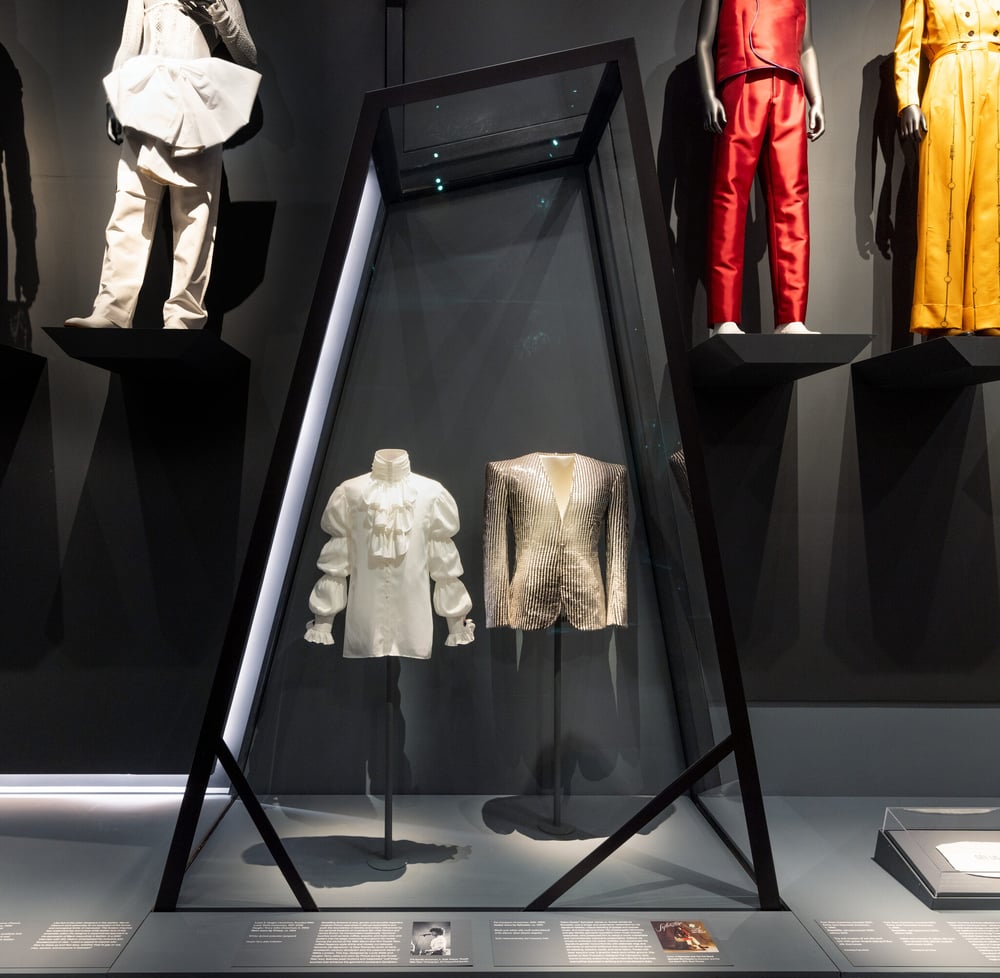
Representing main sponsor Louis Vuitton were designs by the late Virgil Abloh, who included the word dandy in his infamous design dictionaries, and current men’s creative director Pharrell Williams in the form of the pixelated suit, among other styles. Talley’s monogrammed LV trunks were also on display, as was Harlem’s Dapper Dan’s suit, which was reimagined from the LV monogram print.
Recent LVMH Prize finalist Jacques Agbobly, originally from the Togolese Republic, gleefully posed for pictures in front of two designs on display and marveled at the mannequin’s hands-in-pocket pose. “We styled it that way in the lookbook,” he remarked.
Miller noted that the twelve themes would not fully encompass the exhibition; she was right, as pride and gratitude could also describe it.
Copyright © 2025 FashionNetwork.com All rights reserved.


